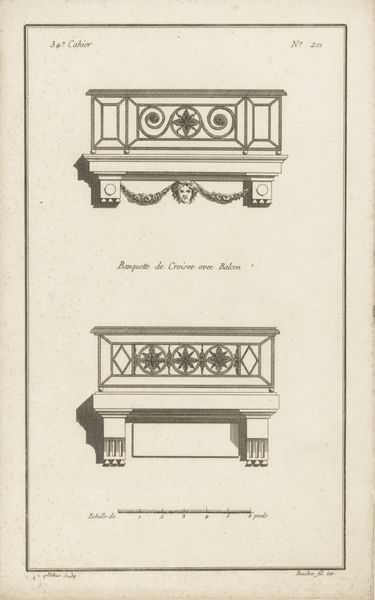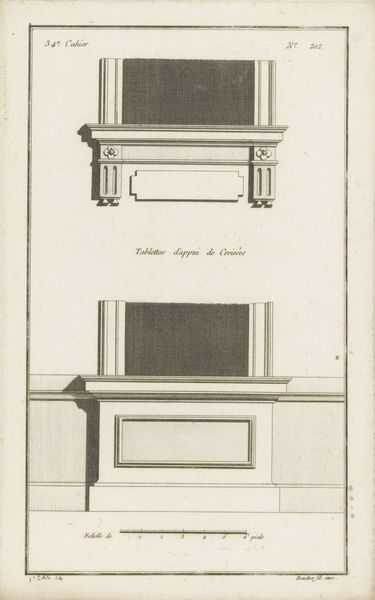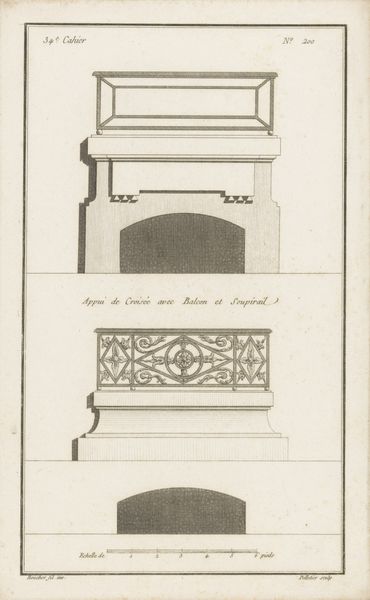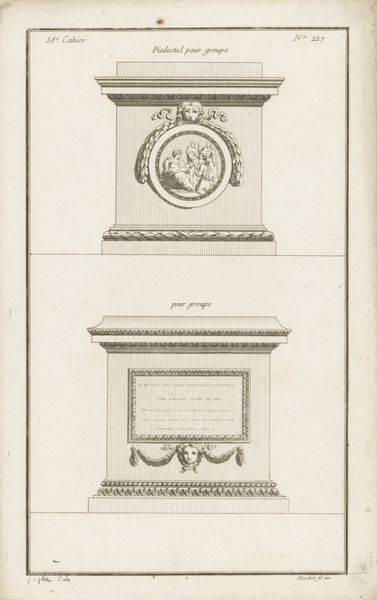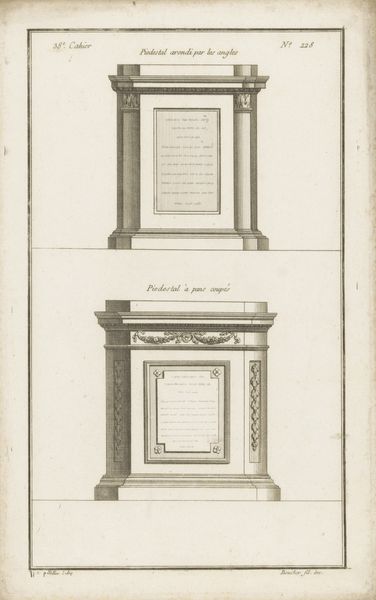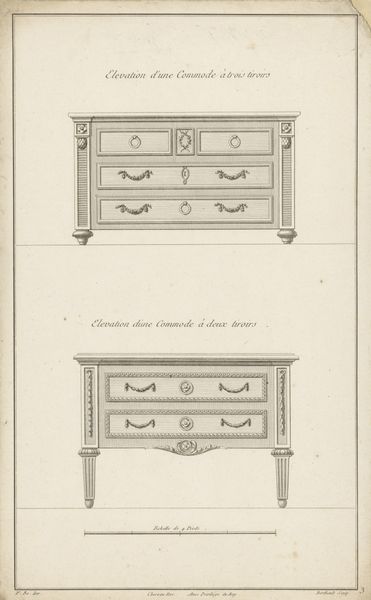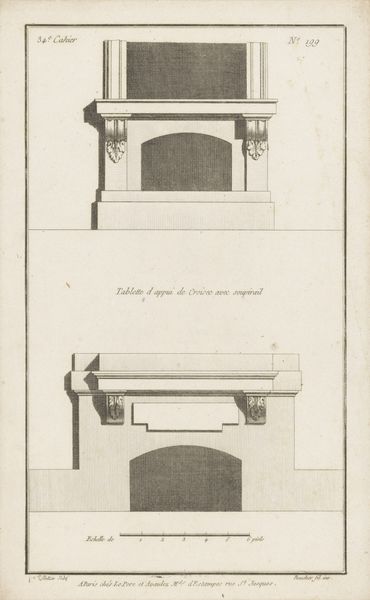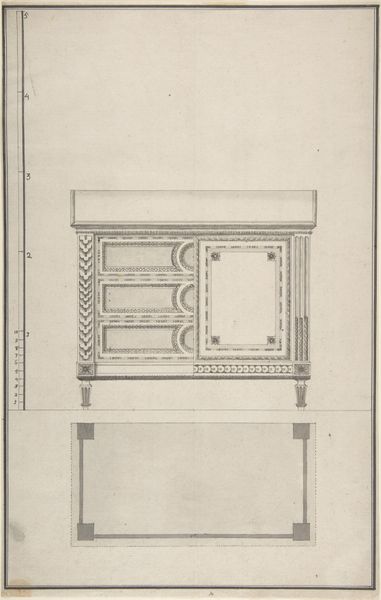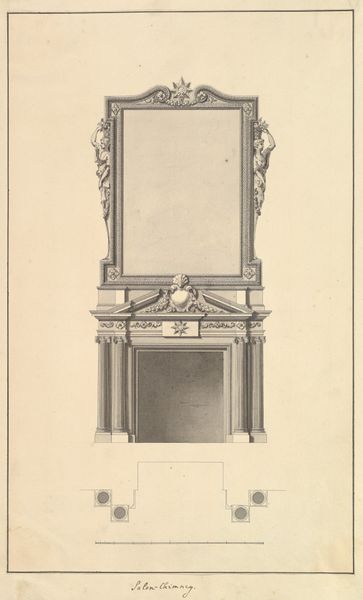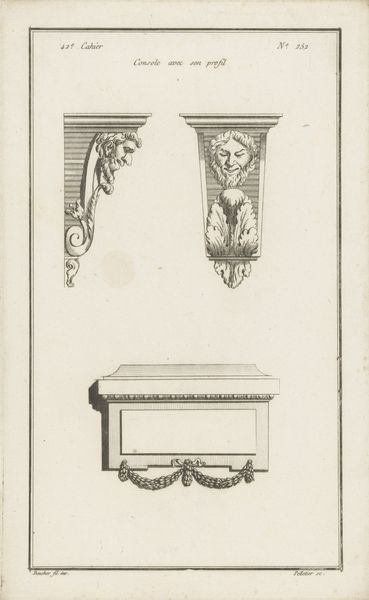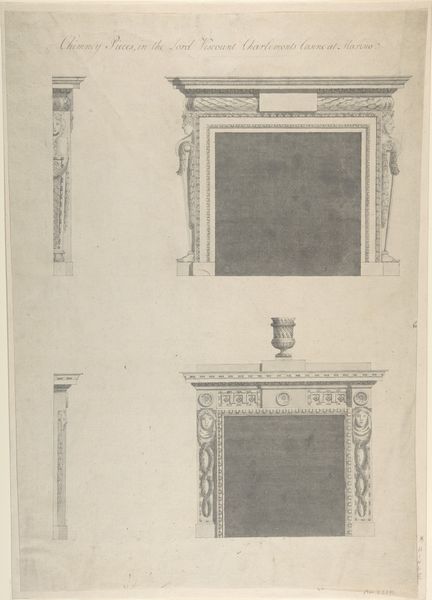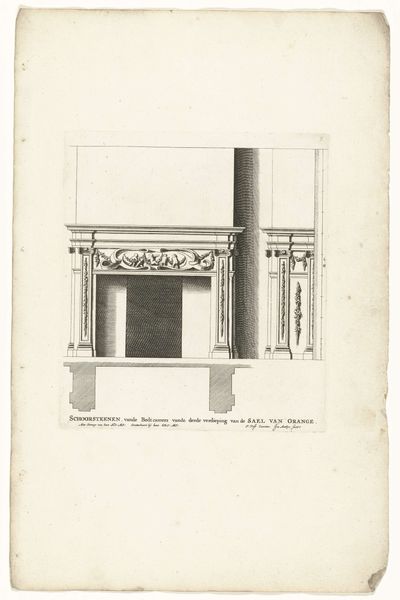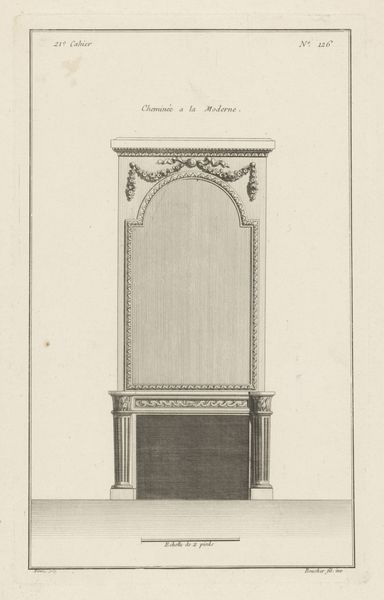
drawing, print, paper, engraving, architecture
#
drawing
#
neoclacissism
# print
#
old engraving style
#
paper
#
form
#
geometric
#
line
#
academic-art
#
engraving
#
architecture
Dimensions: height 330 mm, width 202 mm
Copyright: Rijks Museum: Open Domain
Jean Pelletier etched these two window sills, ‘Twee vensterbanken’, in the eighteenth century. The window sills are adorned with classical motifs that resonate deeply with cultural memory. Observe the ‘meander’ or ‘Greek key’ pattern on the lower sill, a symbol of eternity, tracing back to ancient Greece. This pattern’s continuous, unbroken line suggests the infinite flow of life, an idea echoed in its appearance on funerary urns and temple friezes. Now, shift your gaze to the grotesque faces, positioned as supporting consoles beneath each sill. Grotesques, derived from the Italian ‘grottesca’, meaning ‘from the cave’, hearken back to the rediscovery of ancient Roman frescoes in underground ruins. These faces, often comical or monstrous, symbolize the hidden, irrational aspects of the human psyche. We find similar motifs in medieval gargoyles, guarding sacred spaces with their frightful visages. Thus, Pelletier’s seemingly simple window sills become portals into a complex interplay of classical ideals and primal fears, demonstrating the cyclical return of symbols that continue to shape our cultural landscape.
Comments
No comments
Be the first to comment and join the conversation on the ultimate creative platform.
